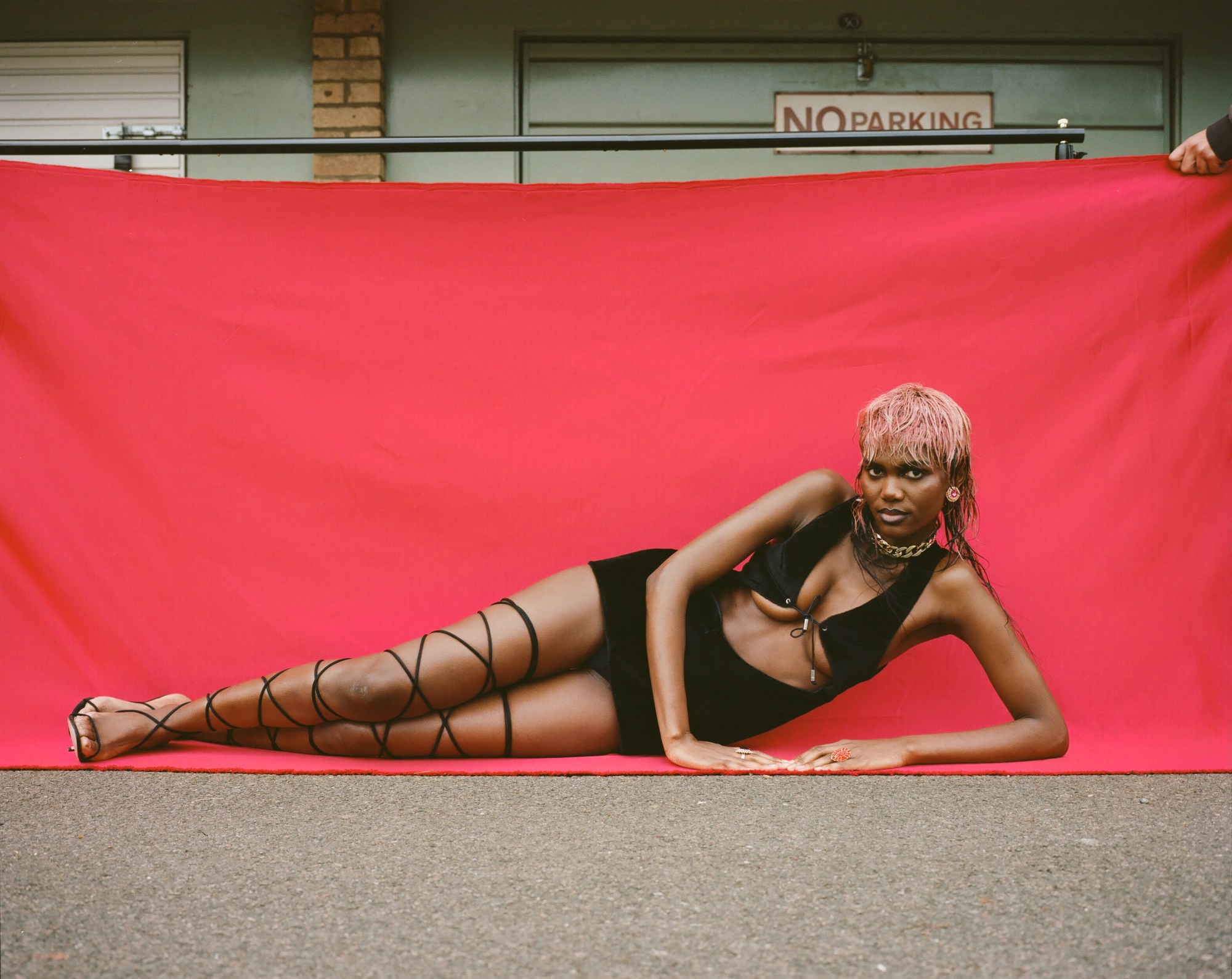The rudimentary components of Tommy Harvey’s fashion design vocabulary are the following: swooping revelatory cuts; scant coverage; and a bright, peacockish zeal for colour, texture and fabrication. A fleeting glance at the slinky zip-up vinyl boys’ bandeaus, ab-cutout minidresses and leather-trimmed vests he puts out through his young label, MMRMS Studio, and one thing’s clearly spelt out: these clothes are made for dancing.
It’s less of a demure two-step here, though, and more of a slow, snakehipped whine. “My work has always been centred around dancehall, and my Caribbean heritage,” Tommy concurs. As the body-forward nature of the garments suggest, and as anyone who’s ever been within earshot of a Spice track will know, the genre “has always about sex, sex appeal and confidence”.
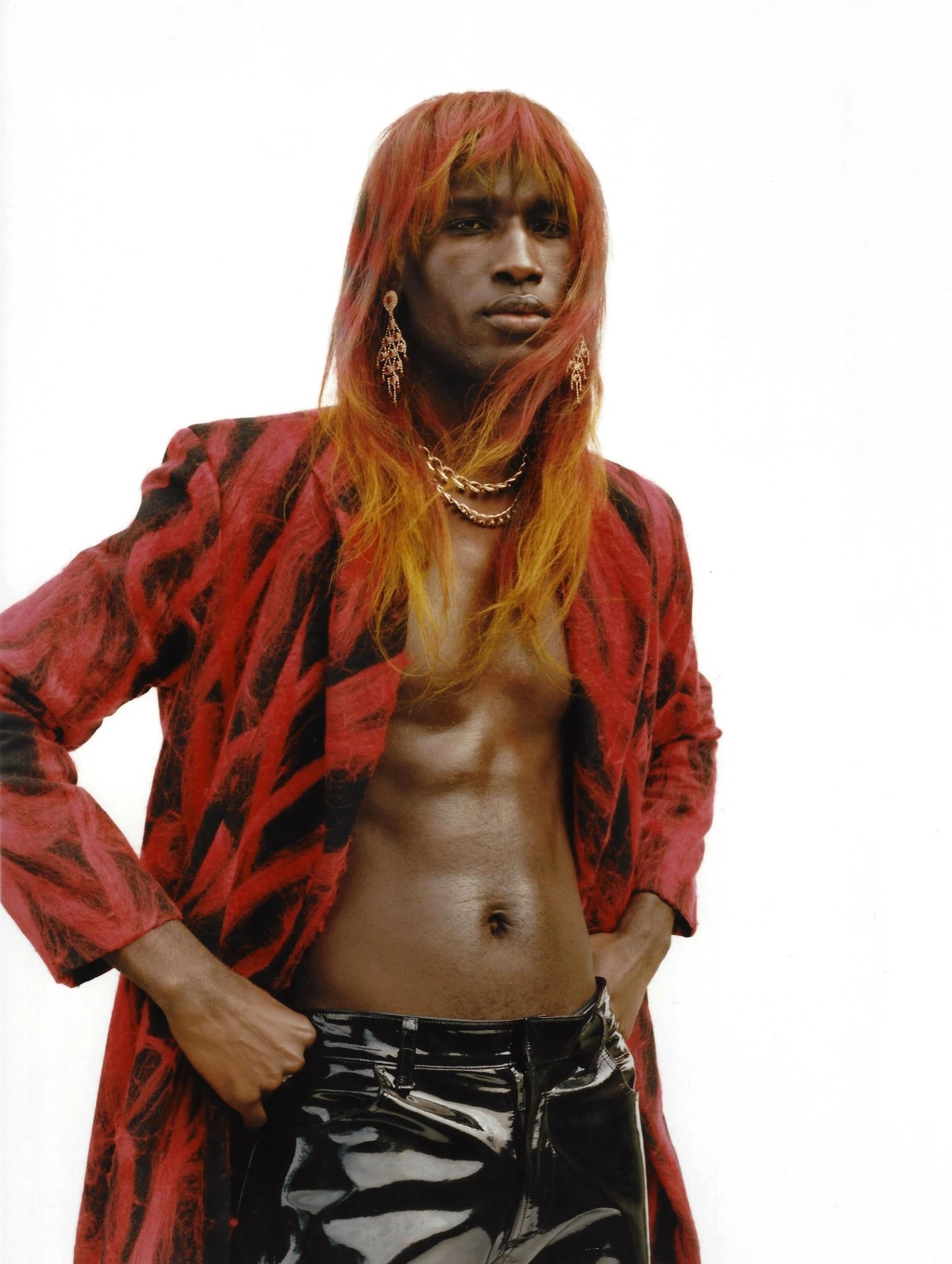
That dancehall has made an indelible mark on mainstream contemporary culture is a fact that needs no stressing. Even among other young London-based menswear designers like Bianca Saunders and Grace Wales Bonner, it’s a perennial font of inspiration. What makes MMRMS Studio so distinct in its treatment of the culture is an inversion of expectation, translating the wanton sexiness typically associated with the scene’s women protagonists through a queered, gender-ambivalent lens. “Much of my work is about going against the stereotypes around Black masculinity that we see in dancehall, this idea that you have to be structured and strong and demanding,” Tommy says. “I think there’s like a subtle sensuality to what I do. I am not strong all the time. Sometimes I just want to be a weak bitch, and that’s OK. I think the clothes I make represent that, the subtlety of a Black man.”
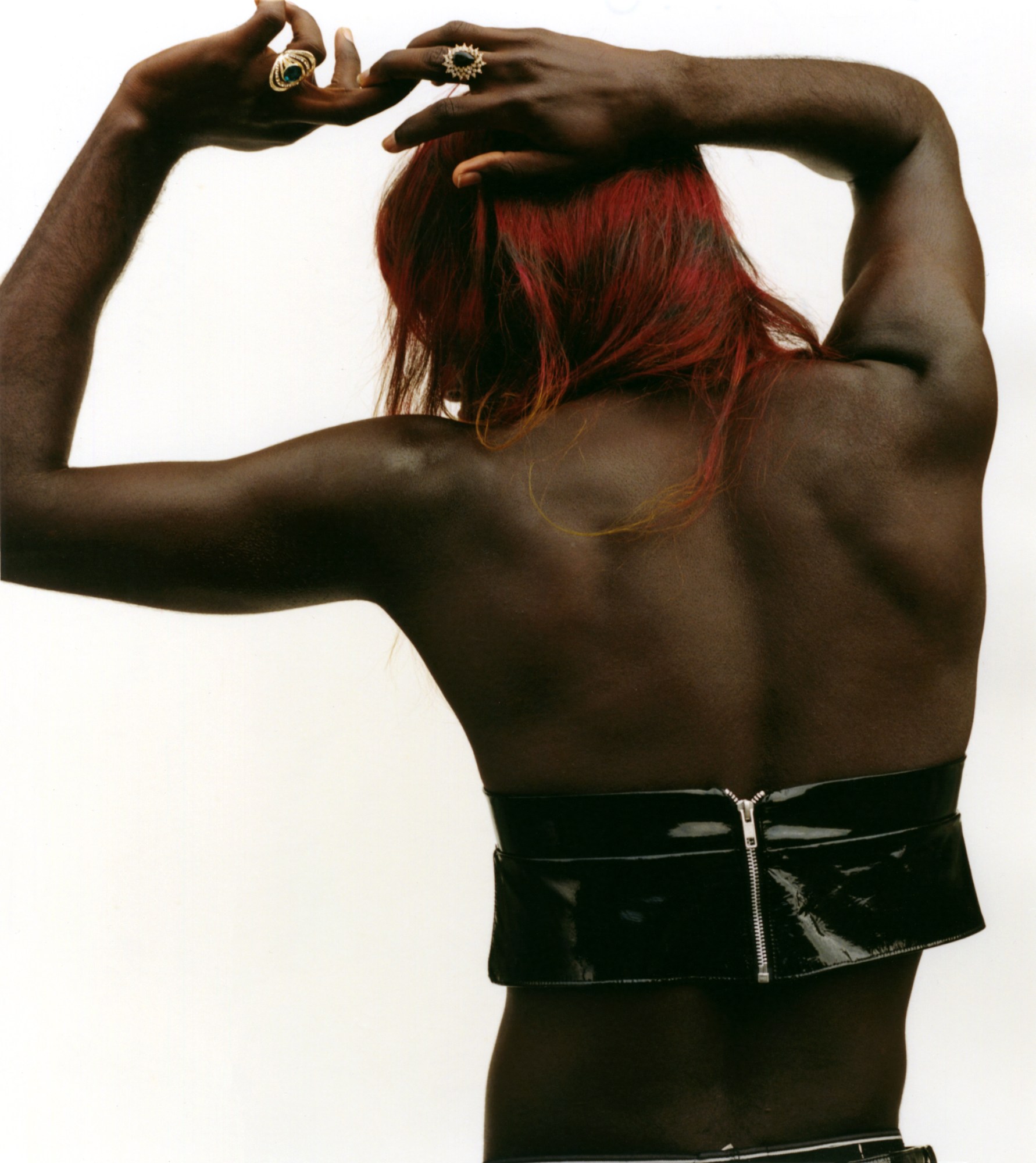
It’s no secret that mainstream dancehall culture has not, historically at least, been a particularly welcoming environment for LGBTQ+ individuals. For Tommy, though, his approach feels less like a conscious act of subversion than it does a natural consequence of his East London youth spent moving through the city’s white-hot POC-led queer party scene. “Whether it’s PDA or Pxssy Palace, it was always about pulling looks and feeling completely comfortable in what you’re wearing, pulling your best look and just feeling confident and sexy,” he says. It’s in this respect that his work comes to represent not just an individual perspective, but rather that of a wider generation of queer Caribbean-diasporic youth breaking the moulds set for them and reclaiming spaces from which they’ve been excluded — saying a flamboyant “no one gives a fuck what your thoughts are. This is as much my culture as it is yours” to any haters.
“It’s a testament to the queer Caribbean scene that’s long been underground in London, but has really come to the forefront recently,” he says. “We’re seeing loads of new queer artists from African and Caribbean backgrounds, and I think it was just about really honing in on the exciting emergence of this new style and sound that’s been popping up recently.”
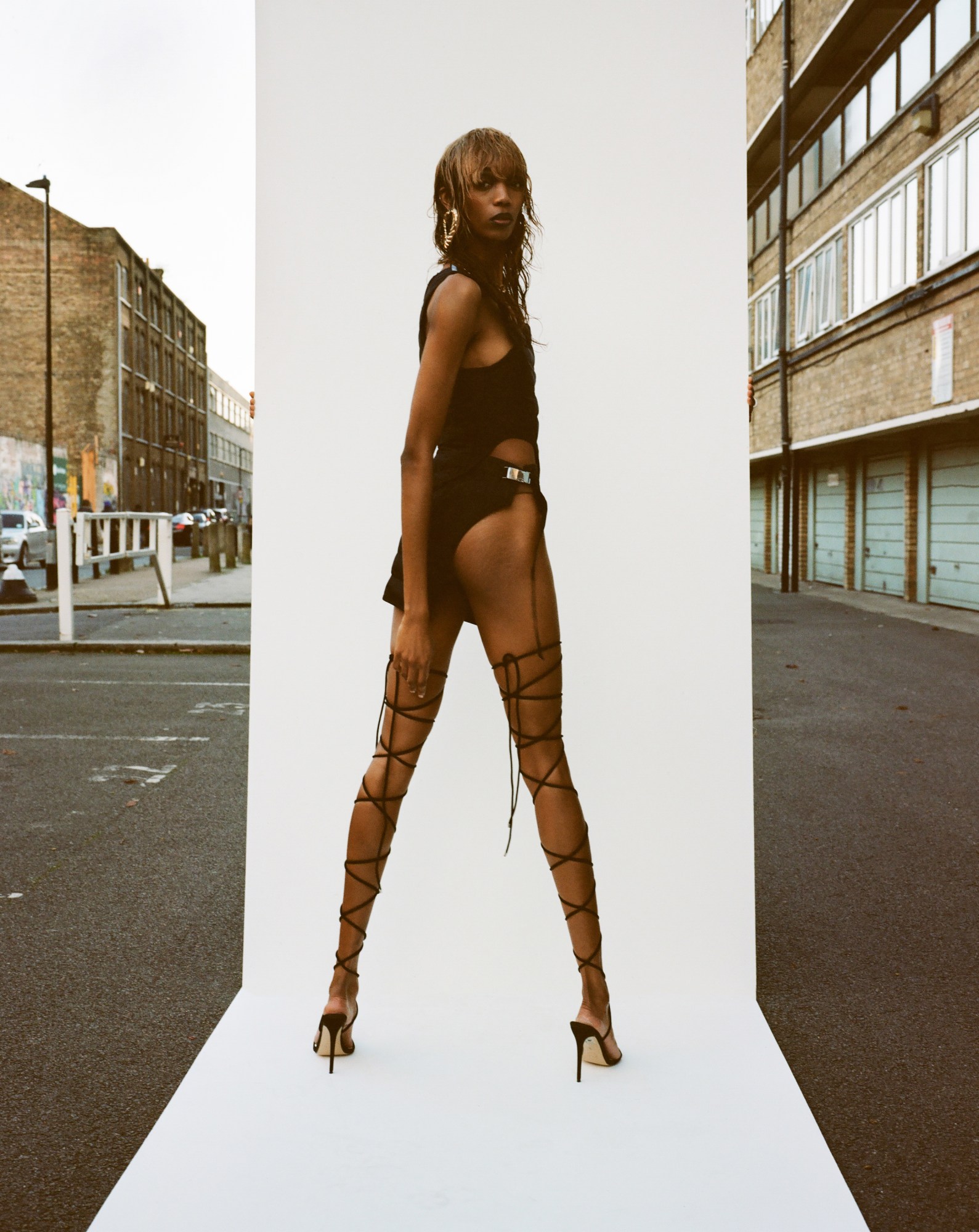
What that translates to in practice is a daring approach to cut. Trousers in black PVC and red canvas sit snug below the hip, while a mock neck harness top in a matching fabric is cut to skim across the top of a wearer’s pecs. There’s more to MMRMS Studio than provocative party wear, though — inspect more closely and you’ll find pieces that tell of a painstaking attention to detail. A tailored wool coat, for example, its black base fabric covered in flame-like streaks of crimson felt. It is, in fact, the result of a synaesthetic listen of Nina Simone’s “Dambala” — “I like to listen to music and kind of feel and see shapes and vibes and colours,” Tommy says — a piece you need to feel as much as see to appreciate the extent of the effort invested into it. And then there’s a hot pink cutout dress, nimbly tied at the bust. Crafted from dyed pony hide, it calls out to be seen in motion, the sheen of its coat glinting under flashing lights.
Clothes that so readily recall blissfully hazy memories of late-night revels past may seem a little at odds with current times. But that’s exactly where their power lies, reminding us that the sweaty basement parties we would have worn them to weren’t, after all, so long ago. And in turn, they renew hope that they aren’t so far away.
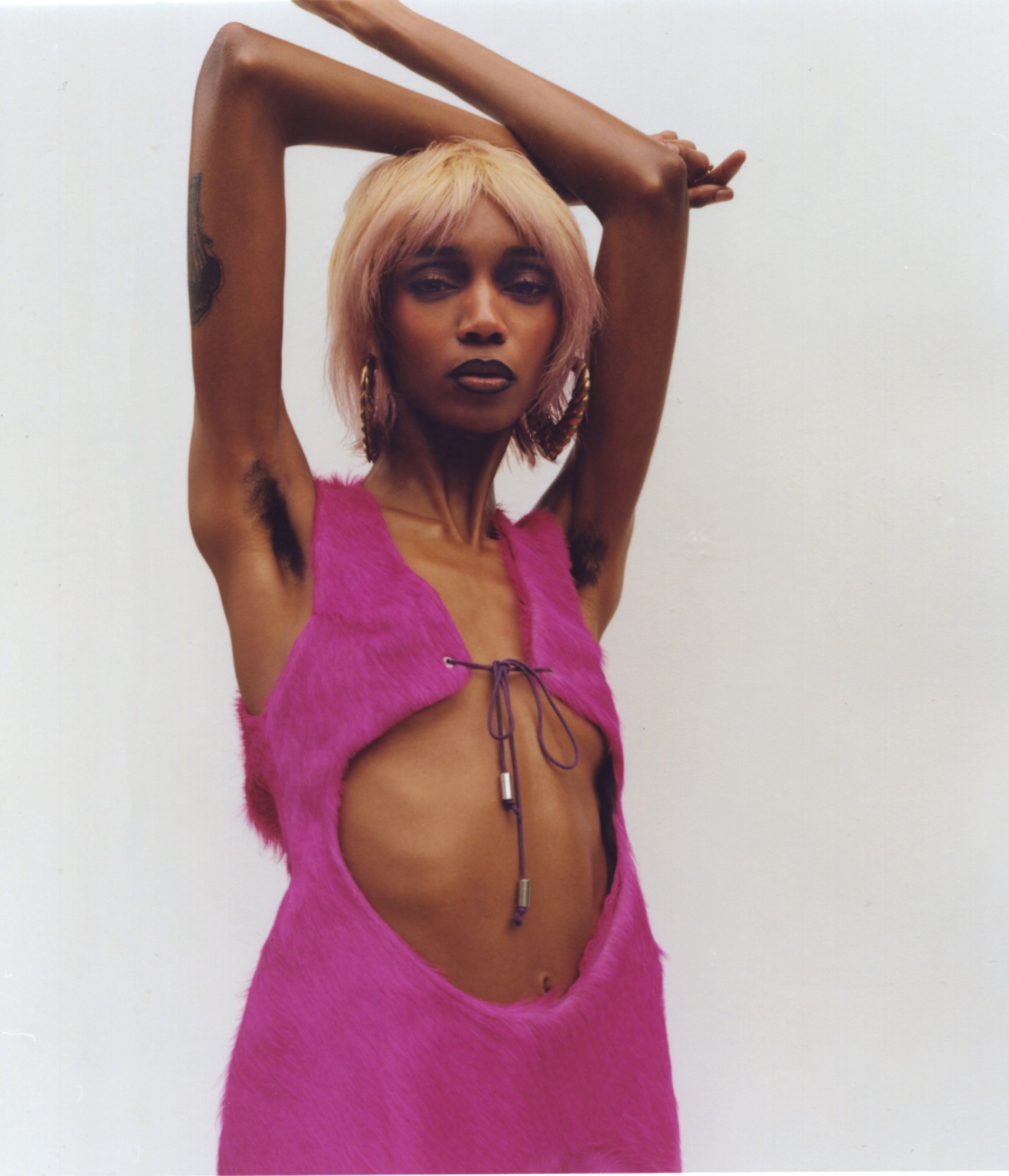


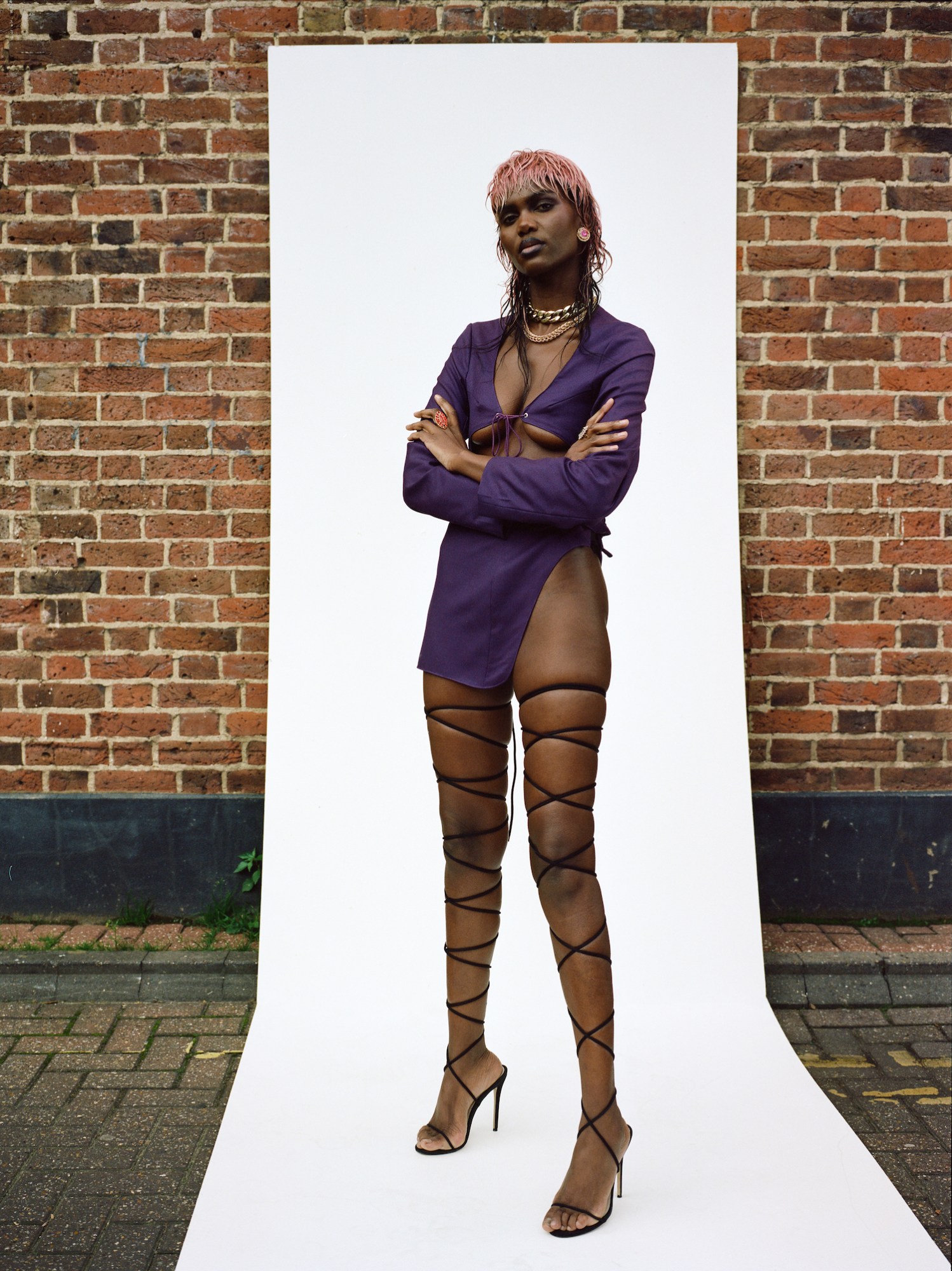
Credits
Photography Heather Glazzard
Styling Juanjose Mouko Nsue
MUA Jasmine Hamilton
Hair Man Wigs
Casting Tide Casting
Assistants Nathan Rose and Arthur Boyd
